 W
WThe 2+2 is a version of the coupé car-body style that has two small rear seats for children or occasional usage, along with two front seats for the driver and front passenger. Manufacturers which sell coupés both with and without rear seats often market the versions that include rear seats as "2+2" or as 2-plus-2.
 W
WTouring car and tourer are both terms for open cars.
 W
WBarchetta is an Italian word commonly translated into English as "little boat". The term originally referred to a small skiff used for recreational purposes. Barchetta is the name of a village in the commune of Volpajola on Corsica. It is also applied to some items of clothing, as well as being used in automobile styling, where it describes a class of open-top, two-seat sports cars.
 W
WA berlinetta is a sports coupé, typically with two seats but also including 2+2 cars.
 W
WA brougham was originally a car body style where the driver sat outside and passengers seated within an enclosed cabin, as per the earlier brougham horse-drawn carriage. Similar in style to the later town car, the brougham style was used on chauffeur-driven petrol and electric cars.
 W
WBuggy is generally used to refer to any lightweight automobile with off road capabilities and sparse bodywork. Most are built either as a kit car or from scratch.
 W
WThe term cab forward refers to various rail and road vehicle designs that place the driver's compartment substantially farther towards the front than is common practice.
 W
WA cabrio coach or semi-convertible is a type of car that has a retractable textile roof, similar to a convertible/cabriolet. The difference is that where a convertible often has the B-pillar, C-pillar and other bodywork removed, the cabrio-coach retains all bodywork to the top of the door frames and just replaces the roof skin with a retractable fabric panel.
 W
WThe configuration of a car body is typically determined by the layout of the engine, passenger and luggage volumes, which can be shared or separately articulated. A key design feature are the car's roof supporting pillars, described from front to rear of the car as A-pillar, B-pillar, C-pillar or D-Pillar.
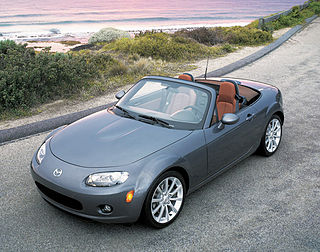 W
WA convertible or cabriolet is a passenger car that can be driven with or without a roof in place. The methods of retracting and storing the roof vary between models. A convertible allows an open-air driving experience, with the ability to provide a roof when required. Potential drawbacks of convertibles are reduced structural rigidity and cargo space.
 W
WCombi coupé is a marketing term used by Saab to describe cars with a sloping coupé-like rear hatchback. The term joins the European term "combi" with coupé.
 W
WA combination car was a vehicle that could serve either as a hearse or as an ambulance, and had the capability of being swapped between those roles without much difficulty. This hybrid usage of the cars reflects an era when funeral homes offered emergency ambulance service in addition to their primary trade, especially in smaller towns and rural areas.
 W
WA compact van is a type of van characterized by a flat front design, mechanicals based on a compact car, an engine placed either at the rear or between and behind the front seats, and similar in size to the VW Bus. Popular in the United States during the early 1960s, they were replaced by full-size vans at the end of the decade. These large vans used body-on-frame construction and featured front engines under a short hood.
 W
WA coupe or coupé is a passenger car with a sloping or truncated rear roofline and two doors.
 W
WCoupé de ville — also known as town car or sedanca de ville — is a car body style produced from 1908 to 1939 with an external or open-topped driver's position and an enclosed compartment for passengers. Although the different terms may have once had specific meanings for certain car manufacturers or countries, the terms are often used interchangeably.
 W
WA coupé utility is a vehicle with a passenger compartment at the front and an integrated cargo tray at the rear, with the front of the cargo bed doubling as the rear of the passenger compartment.
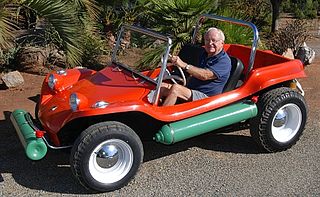 W
WA dune buggy — also known as a beach buggy — is a recreational motor vehicle with large wheels, and wide tires, designed for use on sand dunes, beaches, roads or desert recreation.
 W
WA fastback is an automotive styling feature, defined by the rear of the car having a single slope from the roof to the tail. The kammback is a type of fastback style.
 W
WA Forecar is a body style of small sometimes three-wheeler vehicles that were produced in the late 19th and early 20th centuries. Forecars were produced with three or four wheels and by companies which produced light cars or motorcycles.
 W
WA hardtop is a rigid form of automobile roof, which for modern cars is typically constructed from metal. A hardtop roof can be either fixed, detachable for separate storing or retractable within the vehicle itself.
 W
WA hatchback is a car body configuration with a rear door that swings upward to provide access to a cargo area. Hatchbacks may feature fold-down second row seating, where the interior can be reconfigured to prioritize passenger or cargo volume. Hatchbacks may feature two- or three-box design.
 W
WA hearse is a large vehicle, especially an automobile, used to carry the dead body of a person in a coffin/casket at a funeral, wake, or memorial service. They range from deliberately anonymous vehicles to very formal heavily decorated vehicles.
 W
WA high wheeler is a car which uses large diameter wheels that are similar to those used by horse-drawn vehicles. These cars were produced until about 1915, predominantly in the United States.
 W
WA landaulet, also known as a landaulette, is a car body style where the rear passengers are covered by a convertible top. Often the driver is separated from the rear passengers by a division, as with a limousine.
 W
WA liftback is a variation of hatchback with a sloping roofline between 45 to 5 degrees. On the contrary, traditional hatchback designs usually has a 90 to 46 degree slope on the tailgate or rear door. In other words, the liftback is essentially a hatchback with a more sloping roof similar to sedans/saloons. Some liftbacks may also have an appearance similar to a coupé but with a tailgate hinged at the roof that is lifted to open.
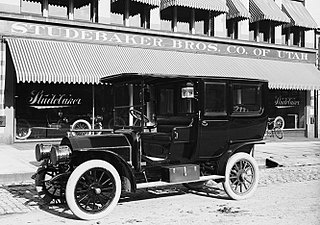 W
WA limousine, or limo for short, is a large luxury vehicle driven by a chauffeur with a partition between the driver's compartment and the passenger's compartment.
 W
WA panel van—also known as a blind van, car-derived van or sedan delivery —is a cargo vehicle based upon passenger car chassis, and typically has one row of seats with no side windows at the rear. Panel vans are smaller than panel trucks and cargo vans, both of which are built on truck chassis.
 W
WA phaeton is a style of open automobile without any fixed weather protection, which was popular from the 1900s until the 1930s. It is an automotive equivalent of the horse-drawn fast, lightweight phaeton carriage.
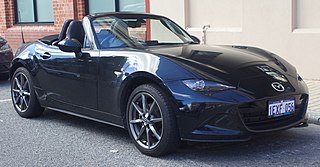 W
WA roadster is an open two-seat car with emphasis on sporting appearance or character. Initially an American term for a two-seat car with no weather protection, usage has spread internationally and has evolved to include two-seat convertibles.
 W
WA roadster utility — also known as a "roadster pickup" or "light delivery" — is an automobile with an open-topped roadster body and a rear cargo bed. The concept is similar to that of the coupe utility, however with a convertible roof instead of a fixed steel roof.
 W
WRoi-des-Belges or tulip phaeton was a popular car body style for luxury motor vehicles in the early 1900s. It was a double phaeton with exaggerated bulges suggestive of a tulip. The rear bulges accommodated two corner seats like tub armchairs which were accessed from the rear by a central door with a small fold-down seat.
 W
WA runabout is a car body style that was popular in North America until about 1915. It was a light, basic style with no windshield, top, or doors and a single row of seats. Runabouts eventually became indistinguishable from roadsters and the term fell out of use in the United States. The approach has evolved into the modern "city car".
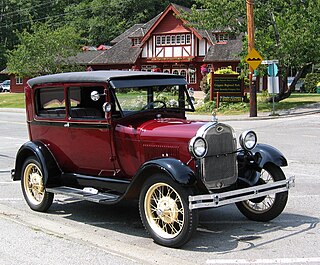 W
WA sedan, or saloon, is a passenger car in a three-box configuration with separate compartments for engine, passenger, and cargo.
 W
WShooting brake is a car body style which originated in the 1890s as a horse-drawn wagon used to transport shooting parties with their equipment and game.
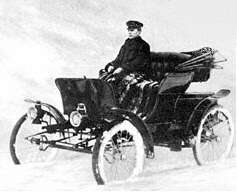 W
WIn automotive use, the Stanhope is a car body style characterized by its single bench seat mounted at the center, folding cloth top, and a dashboard at the front. These vehicles were built from approximately 1900 to 1910. The design was derived from the Stanhope horse-drawn carriage and could be considered a specific type of runabout.
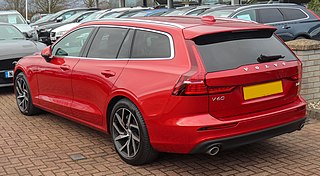 W
WA station wagon, also called an estate car, estate wagon, or simply wagon or estate, is an automotive body-style variant of a sedan/saloon with its roof extended rearward over a shared passenger/cargo volume with access at the back via a third or fifth door, instead of a trunk/boot lid. The body style transforms a standard three-box design into a two-box design — to include an A, B, and C-pillar, as well as a D-pillar. Station wagons can flexibly reconfigure their interior volume via fold-down rear seats to prioritize either passenger or cargo volume.
 W
WThe torpedo body style was a type of automobile body used from 1908 until the mid-1930s, which had a streamlined profile and a folding or detachable soft top. The design consists of a hood or bonnet line raised to be level with the car's waistline, resulting in a straight beltline from front to back.
 W
WTouring car and tourer are both terms for open cars.
 W
WA vis-à-vis is a carriage in which the passengers sit face to face with the front passengers facing rearward and the rear passengers facing forward. The term comes from the French vis-à-vis, meaning face to face.